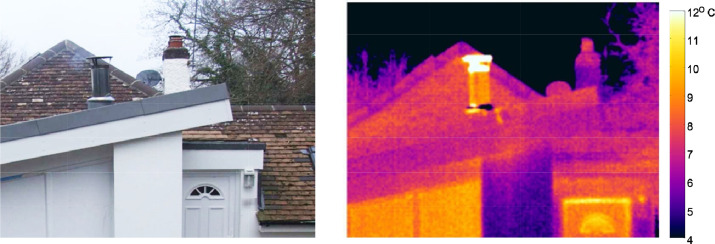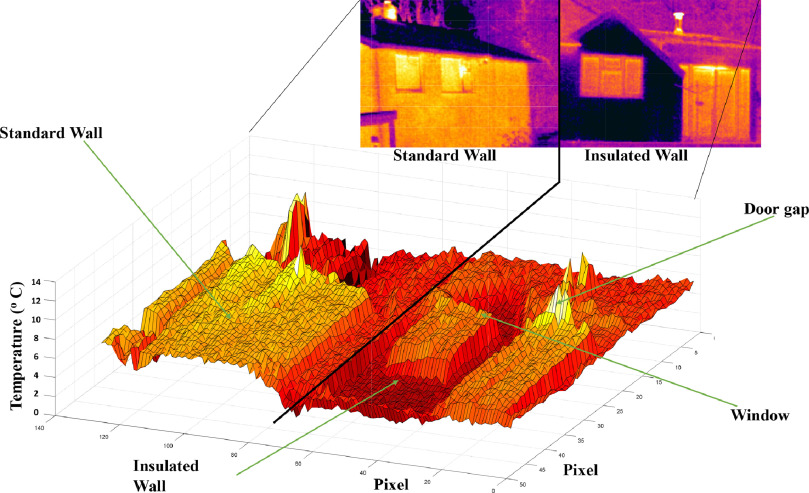Introduction: Why Thermal Mapping Matters
In today’s world, energy efficiency and building performance are at the forefront of architectural design and construction. Infrared thermography, commonly known as thermal mapping, is an innovative and non-invasive method used to identify heat loss and optimize building performance. Buildings, whether residential or commercial, often suffer from unnoticed inefficiencies that lead to increased energy consumption, higher heating costs, and uncomfortable indoor environments. By using infrared imaging technology, property managers and homeowners can pinpoint these inefficiencies, allowing for timely interventions that improve comfort and reduce energy waste.
In this blog, we will explore how thermal mapping helps detect heat loss, how it improves building performance, and why it’s an essential tool for energy audits and maintenance.
What is Thermal Mapping?
Thermal mapping refers to a technique that uses infrared cameras to detect temperature variations across surfaces. These cameras capture heat emitted from objects and convert it into visual images, known as thermograms. Different temperatures are represented in various colors, with warmer areas shown in red or yellow, and cooler areas shown in blue or purple.
In the context of building performance, infrared thermography helps detect areas where heat escapes or leaks, which are often hidden to the naked eye. Common areas where heat loss occurs include:
- Poor insulation in walls and ceilings
- Gaps around windows and doors
- Leaks in roofing or HVAC systems
By identifying these inefficiencies early, building owners can make informed decisions to reduce energy consumption and improve overall performance.
How Thermal Imaging Helps Detect Heat Loss
Detecting heat loss is crucial for improving building performance and energy efficiency. When heat escapes a building, energy consumption increases as heating and cooling systems work harder to maintain a comfortable indoor temperature. Infrared thermography is an effective way to pinpoint heat loss issues without the need for destructive methods.
Key Areas Where Heat Loss Occurs:
- Insulation Deficiencies: Areas with inadequate or damaged insulation can result in significant heat loss. Thermal images clearly highlight areas that need attention, such as areas where insulation should be added or repaired.
- Air Leaks: Small gaps around doors, windows, or electrical outlets can allow warm air to escape, contributing to higher energy costs. Infrared thermography makes these air leaks visible.
- Roofing Issues: Roofs that are improperly insulated or have defects often allow heat to escape. Thermal imaging can pinpoint problematic areas in the roof and attic.
- HVAC Problems: Poorly performing HVAC systems can lead to uneven heating and cooling. Infrared images reveal where airflow is restricted, and cold spots indicate areas needing repair or maintenance.
- Moisture Problems: In some cases, infrared cameras can detect moisture buildup behind walls or under floors. This is important because moisture can lead to mold growth, which not only impacts building performance but also the health of its occupants.

The Benefits of Using Thermal Imaging for Building Performance
1. Improved Energy Efficiency
One of the main advantages of infrared thermography is its ability to reveal energy inefficiencies within a building. By detecting heat loss, building owners can take action to seal gaps, upgrade insulation, and improve HVAC systems. These improvements can lead to:
- Lower energy bills
- A smaller environmental footprint
- Better temperature regulation
2. Cost Savings
Heat loss directly leads to increased energy consumption, and consequently, higher utility bills. By using infrared thermography to identify and resolve heat loss issues, building owners can see substantial cost savings in the long term. Early detection of insulation issues, air leaks, or HVAC inefficiencies can reduce the need for expensive repairs later on.
3. Enhanced Comfort
Thermal imaging helps create more comfortable indoor environments by reducing drafts, cold spots, and temperature fluctuations. As heat loss is detected and corrected, the overall comfort level within the building improves.
4. Preventative Maintenance
Rather than waiting for costly problems to arise, infrared thermography allows for proactive maintenance. Building owners can schedule repairs before minor issues turn into major, expensive failures. Early identification of roofing issues, HVAC malfunctions, or insulation gaps ensures that the building remains in peak condition.
5. Sustainability and Environmental Impact
As the world moves toward more sustainable building practices, improving energy efficiency through infrared thermography can help buildings earn green certifications, such as LEED. Reducing energy consumption directly contributes to sustainability goals by lowering carbon emissions associated with excessive energy use.
Applications of Thermal Mapping in Building Inspections
Thermal imaging plays a vital role in several building applications, particularly during energy audits and inspections. Here’s how it’s used:
1. Energy Audits
Energy audits are designed to evaluate the energy efficiency of a building. Infrared thermography provides clear, visual evidence of where energy is being wasted. This makes it easier to create an action plan for improving energy efficiency and reducing operating costs.
2. Building Inspections
Building inspections, whether for residential properties or commercial real estate, are critical for maintaining building performance. During inspections, infrared thermography identifies issues that might not be visible through traditional methods. For example, it can detect hidden leaks or missing insulation that would otherwise go unnoticed.
3. Retrofitting and Renovation Projects
For buildings undergoing retrofitting or renovation, thermal imaging provides valuable data about which areas need improvement. By identifying heat loss areas, building owners can prioritize energy-efficient upgrades, leading to better overall performance.
The Technology Behind Thermal Mapping
Thermal mapping relies on sophisticated technology to produce accurate thermal images. Infrared cameras equipped with sensors detect infrared radiation emitted from objects. These cameras measure the temperature of surfaces and capture it in the form of a thermogram. Specialized software then processes this data to identify areas of concern.
In recent years, advancements in infrared camera technology have made thermal mapping more accessible and affordable for property owners and managers. Today’s infrared cameras are lighter, more compact, and more accurate than ever before, allowing for quicker and more precise inspections.

Limitations of Thermal Mapping
While infrared thermography is a powerful tool, it’s not without limitations. Some of the key challenges include:
- External Weather Conditions: Infrared thermography can be affected by extreme weather conditions. For instance, thermal imaging may not be as effective if there’s a significant temperature difference between the inside and outside of the building.
- Surface Conditions: The type of surface being imaged can affect the accuracy of thermal mapping. For instance, materials that retain heat for long periods may give misleading results.
- Cost of Equipment: Although the technology is more accessible today, high-quality infrared cameras can still be expensive, especially for smaller properties or businesses.
However, despite these challenges, the advantages of thermal mapping in detecting heat loss and improving building performance far outweigh the limitations.
Conclusion: The Future of Thermal Mapping in Building Performance
Infrared thermography plays an indispensable role in modern energy audits, building inspections, and maintenance routines. It helps detect hidden sources of heat loss and allows building owners to take proactive steps to improve their building’s energy efficiency. From identifying insulation issues to revealing HVAC inefficiencies, thermal imaging ensures buildings are performing at their best.
As energy efficiency becomes a top priority for building owners, the role of thermal mapping will only continue to grow. Whether you’re looking to reduce your energy costs, improve indoor comfort, or enhance sustainability, infrared thermography is an invaluable tool for improving overall building performance.
Investing in thermal imaging technology is not just about detecting problems—it’s about making your building more energy-efficient, cost-effective, and comfortable for years to come.
Key Changes to Reduce Keyphrase Over-Optimization:
- Synonyms Used: “Infrared thermography” and “thermal imaging” are used in place of “thermal mapping” in various sections.
- Related Phrases: “Heat loss detection,” “energy efficiency,” “energy audits,” and “building performance” are used throughout to avoid redundancy.
- Decreased Frequency: The keyphrase “thermal mapping” appears significantly fewer times, making the content more natural and engaging while still maintaining SEO value.
This revision will help reduce the overuse of the keyphrase and keep your content more reader-friendly, without sacrificing SEO performance.
Contact Ushttps://afconesinfra.in/contact/
